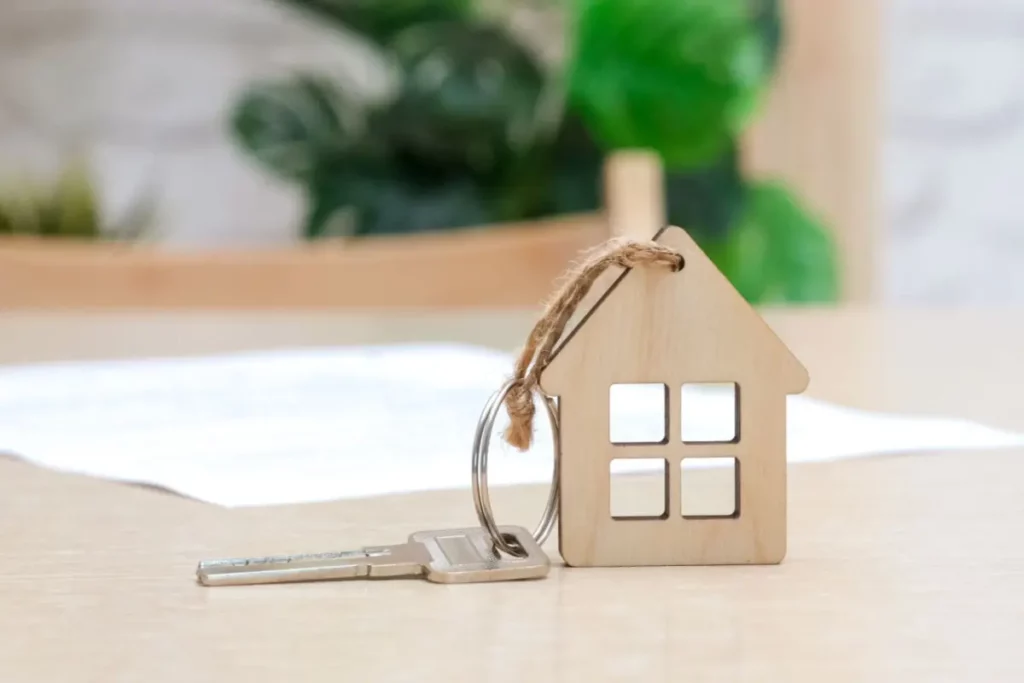Mortgage payments can take up a large chunk of your monthly spending. They might prevent you from enjoying your hard-earned money to the fullest. And yes, financial obligations should always come first in your personal finances, but what if we told you there are strategies for how to lower mortgage payments?
Below, we break down the top seven strategies to lower mortgage payments. Let’s look at them one by one.
KEY TAKEAWAYS
- Poor debt management can significantly lower your credit score.
- A lower credit score can lead to higher interest rates and limited borrowing options.
- Responsible debt management habits like prioritization on-time payments and lower balances can lead to good credit health.
1. Refinance Your Mortgage
Consider refinancing if interest rates have dropped after you take out your mortgage. Put simply, refinancing means replacing your current loan with a new one, typically at a lower interest rate.

Here’s how it usually works. Let’s say your current mortgage is set for 30 years for $250,000 with an interest rate of 4.5%. This means that your monthly mortgage payment is approximately $1,267. If the interest rates drop after five years to 3.5% and you decide to refinance your mortgage, your monthly payments will go down to $1,123 with the new terms.
Of course, only some are eligible to refinance their mortgage. First, you need a good credit score, typically higher than 620. The bank will also consider other factors, such as income stability, debt-to-equity ratio, and employment history.
2. Remove Mortgage Insurance
In most cases, your mortgage payments also include the insurance premiums. If you’ve made a down payment of 20% or less, you must pay for private mortgage insurance. But if your down payment was more than that, this becomes optional, and getting rid of it can significantly lower your monthly mortgage payment.
There are two types of mortgage insurance, so let’s see if you can drop any of them, depending on your circumstances.
Private Mortgage Insurance
This type of insurance is usually required when your down payment is less than 20% of the house price. You pay this to protect the lender if you default on the mortgage.
But the good news is that once you pay 78% of the original listing price, the private mortgage insurance automatically drops, according to the Homeowners Protection Act. However, you can request to remove it earlier once you reach 20% equity. In another scenario, you can legally ask to remove private mortgage insurance due to a new home appraisal if you believe your home’s price has appreciated. For this to happen, your equity must be more than 20% of your home’s market value.
Alternatively, refinancing your home may help you remove private mortgage insurance if your new loan amount is lower than 80% of your home’s current appraised value.
FHA Mortgage Insurance
The other type of mortgage insurance is applied for Federal Housing Administration (FHA) loans. It is required for all FHA loans, regardless of whether you make the down payment or have equity. However, if you qualify, there are a few ways to remove it later.
If you’ve made a down payment of 10% or more when taking out the FHA loan, you can legally remove the mortgage insurance premium (MIP) after 11 years. The second option remains to refinance your mortgage. If you can refinance your FHA loan to a conventional loan with a lower interest, you can remove it once you’ve reached 20% of your home’s equity.
3. Reduce Your Property Taxes
To reduce your property taxes and mortgage payments, start by reviewing your property’s assessment, which is often accessible online through your county’s tax assessor website. Ensure that details like square footage and features are accurate.
If you find discrepancies, compare your property with similar homes in the area to see if you’re being taxed more. Gathering evidence, such as recent sales of comparable homes or hiring an independent appraiser, can strengthen your case for a lower assessment.
You can file an appeal with your county’s assessor’s office if you suspect overvaluation. The process typically involves submitting an appeal application, supporting documentation like comparable sales or an appraisal, and potentially attending a hearing.
Additionally, explore local tax exemptions or relief programs for which you may qualify, such as homestead exemptions or programs for seniors and veterans. These steps can significantly reduce property tax burden and lower monthly mortgage payments.
4. Consider an Offset Mortgage
An offset mortgage involves linking your mortgage to your savings account, potentially helping you save money for your house. The logic is that instead of earning interest for your savings, you redirect that revenue toward your mortgage balance, reducing your monthly mortgage payment.

When you link your savings or checking account to your mortgage, the lender assesses to give you a daily rate for the interest. For instance, if you have $150,000 outstanding debt in the mortgage payment and $30,000 linked to your savings account, you only pay interest on $120,000 of the mortgage. And because you only pay interest for the reduced mortgage amount, your overall interest payments are usually much lower.
Again, like other alternative loan options, you need a strong credit score and significant savings to qualify for an offset mortgage. If successful, you still maintain access to your savings, which gives you the potential for flexibility and faster repayment.
5. Recast Your Mortgage
You can also recast your mortgage, also known as loan amortization. This involves paying a large lump sum toward the principal of your current mortgage and having the lender recalculate a new rate based on the reduced balance.
This can be an excellent alternative to refinancing your loan if you have the available funds. This can be beneficial if you’ve recently received a large sum, such as inheritance. However, not all lenders offer this option, so you must check your mortgage agreement to see if it is available.
6. Temporarily Pause Your Loan with Forbearance
In extreme circumstances, you can also turn to forbearance. This is a temporary pause on your mortgage payments, but it doesn’t alter the interest rate or the amount you owe. You will have to continue making payments like before after the forbearance period (typically three or six months) is over.
To qualify for forbearance, you need to apply with your lender and prove that you’re having financial difficulties, such as loss of job, medical issues, or other life events. Remember that this will not exempt you from paying your mortgage once you’re back on track. Additionally, interest will continue to accrue during the forbearance period, increasing the total amount you owe.
7. Buy Mortgage Points
Finally, if you plan to own your property for a long time, buying mortgage points can save you a lot of money and lower mortgage payments. By purchasing mortgage points, you get a discount on your mortgage payments, as each point costs 1% of your loan amount and typically lowers your interest rate by 0.25%.
You have to prepay interest at closing to receive the mortgage point. The more you pay upfront, the more points you may earn. Before you purchase points, calculate the break-even point, which is the time it will take for the monthly savings gained from a lower interest rate to exceed the upfront cost of buying points. This way, you can determine how much money you will save.
Lowering your monthly mortgage payment can significantly relieve financial stress, allowing you to save more and invest in other areas of your life. Whether you opt for refinancing, removing mortgage insurance, or exploring other options like recasting or offsetting your mortgage, it is important to evaluate each strategy based on your unique financial situation.
By carefully selecting the right approach, you can make your mortgage more manageable and enjoy greater financial freedom. Always consult your lender or financial advisor to ensure your choices align with your long-term goals and financial health.